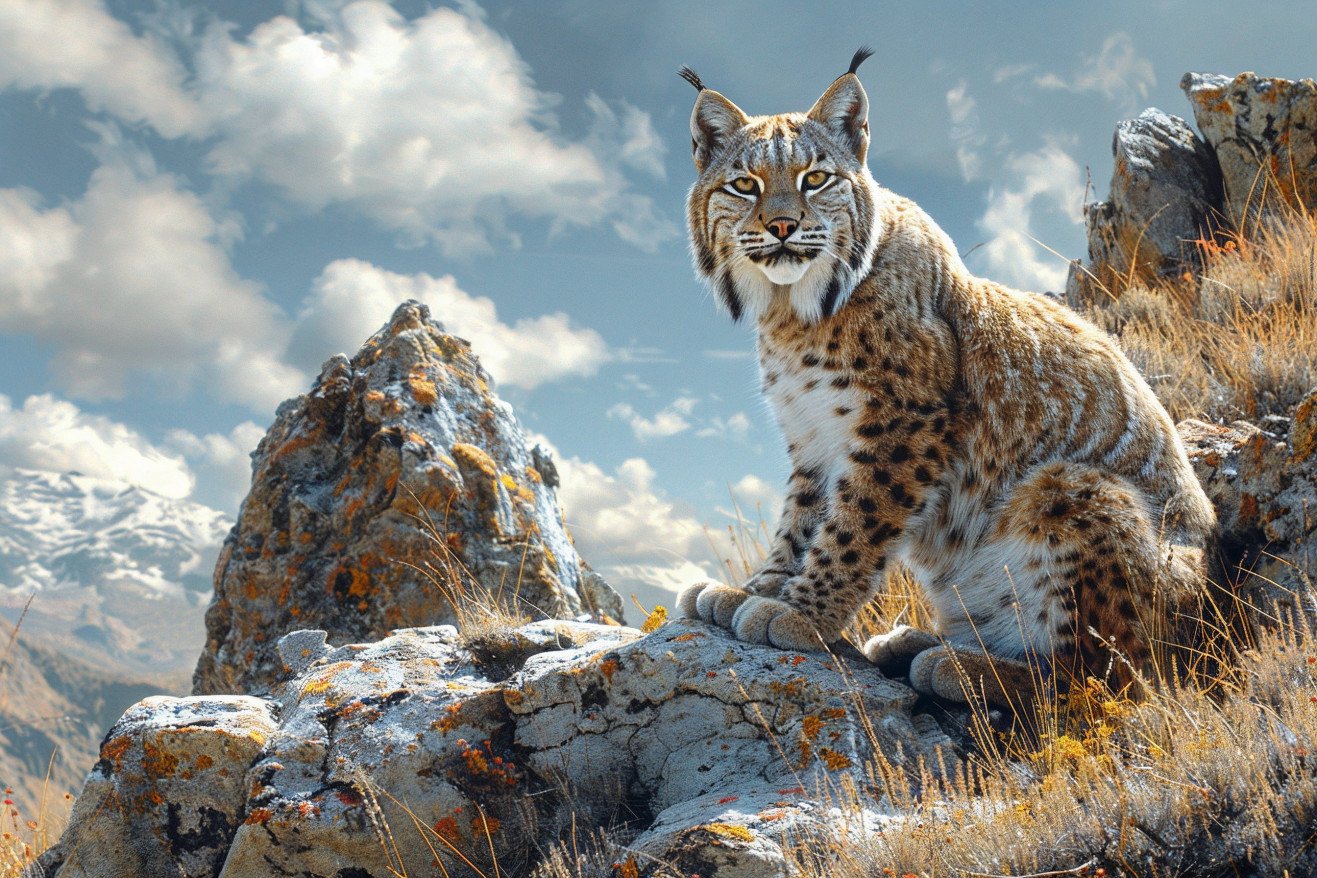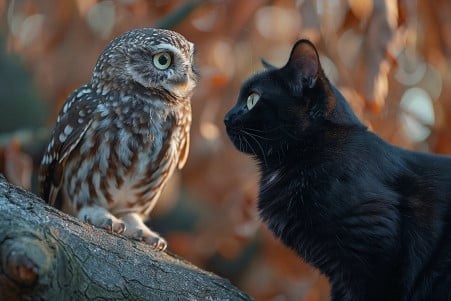What Do Wild Cats Eat? Exploring the Diverse Prey of Feline Predators
5 May 2024 • Updated 3 May 2024

Whether you're a cat lover or a wildlife enthusiast, the wide variety of prey and dietary preferences of the world's wild feline species is an interesting subject. Wild cats are obligate carnivores, which means that they have to eat animal protein to survive. Most wild cats eat small mammals like rodents, rabbits, and birds, but larger cats such as lions and tigers also hunt larger hoofed animals, reptiles, fish, and even carrion.
Our understanding of the nuances of wild cat diets is based on years of work in the fields of ecology, zoology, and conservation biology. This article will cover the results of observational studies that have followed cats to see what they hunt, dietary analyses, and other scientific investigations into the hunting techniques of different wild feline species in a variety of environments. In doing so, we will not only learn about what keeps these cats alive but also how their hunting impacts the ecosystems they live in.
What do wild cats eat?
The Diets of Different Wild Cat Species
The diet and prey preferences of wild cats can differ widely from species to species. Smaller wild cats such as bobcats, lynx, and margays tend to focus on small mammals, birds, reptiles, and insects. Some wild cat species have more specialized diets, such as the Andean mountain cat, which primarily preys on mountain viscachas, and the Pallas's cat, which relies heavily on pikas.
Larger wild cats such as lions, tigers, leopards, and jaguars are more opportunistic and diverse hunters and can take down larger hoofed animals. Lions tend to focus on larger herbivores, while tigers can take down prey that weighs up to 1,000 kg. Leopards prefer medium-sized ungulates like impala, and jaguars have a diet that includes at least 85 prey species, including reptiles.
The wild cat's habitat, the availability of prey, and the cat's size and hunting skills all play a role in determining what they eat. For example, the sand cat mainly feeds on small desert rodents and birds, while the rusty-spotted cat preys on birds and rodents in the forests of India. This diversity in prey selection enables different wild cat species to live in the same area without competing with each other by each filling a different ecological niche.
Hunting Techniques and Strategies of Wild Cat Predators
Wild cats use a variety of hunting techniques and strategies to successfully capture and kill their prey. Smaller cats such as bobcats, lynx, and margays primarily use stalking, ambushing, and pouncing to catch smaller prey like birds and rodents. As noted in How Do Cats Hunt? | Hunting Strategies & Techniques in Domestic Cats, the "stalk and pounce" method is the most common hunting strategy among wild cats. It involves the cat slowly stalking its prey before freezing to assess the situation and then leaping to attack.
Larger cats such as tigers, however, use an even wider variety of hunting methods. As outlined in Tiger Hunting Strategies: How Tigers Hunt Their Prey, tigers use stalking, ambushing, swimming, family group hunting, and chasing/pursuit strategies to hunt and kill larger prey such as deer and wild boar. Tigers' hunting methods are made possible by their powerful bodies, keen senses, and adaptability.
In general, wild cats have evolved a number of physical and behavioral traits that help them hunt and kill their prey. By learning about these hunting techniques, we can gain a better understanding of the ecological roles and functions of these feline predators in their environments.
Wild Cats' Water Needs and Where They Get Water
Wild cats need water to survive and thrive in their natural environments. While many wild cats can get a lot of the water they need from the prey they eat, which is often very moist, as noted in a study by Beuchat CA, cats have also evolved physiological adaptations, such as the ability to concentrate their urine, that help them retain water in dry habitats.
That said, having access to water in the form of streams, lakes, and waterholes is still important, especially when prey is scarce or during droughts. In fact, as noted in the book "Desert Animals" by Schmidt-Nielsen, access to water is one of the most important factors in the survival of wild cats in the desert. Knowing how wild cats get the water they need is an important part of understanding their ecology and how to protect them.
Coexisting and Conflict: Wild Cats and Human Interactions
With the expansion of human populations, human-wild cat conflicts over space and resources are on the rise. In fact, the report by UNEP notes that more than 75% of wild cat species worldwide are impacted by conflict-related killing. For example, wild cats may hunt livestock or raid crops, which often leads to humans killing the wild cats in retaliation.
Conservation groups are working to help reduce these conflicts. For example, Panthera's Wild Cat Conflict Response Unit is working to address threats from large carnivores, such as jaguars and pumas, by working with farmers to provide solutions that are tailored to their specific needs. This includes interventions such as light-emitting livestock collars, low-voltage electric fences, and maternity paddocks, which have an almost 100% success rate in preventing livestock predation.
The promotion of human-wild cat coexistence is essential for the conservation of these keystone species and their habitats. As noted in a study published in BMC Ecology, long-term coexistence will require sustainable solutions that balance human and wildlife needs, such as raising awareness, setting up clear boundaries, and ensuring that local communities are able to equitably share in the benefits of conservation.
Human-wildlife conflicts not only threaten human well-being but also come with significant social and economic costs. However, as studies have found, it's important to address the complex social and ecological factors that underlie these conflicts in order to ensure that wild cat species can survive and thrive in the long term.
Conclusion: The Importance of Wild Cats in Ecosystems
With human populations growing and expanding, human-wild cat conflicts over space and resources are on the rise. More than 75% of the world's wild cat species are impacted by conflict-related killing, and the same is true for many other terrestrial and marine carnivores and large herbivores.
Human-wildlife conflict is a development and humanitarian issue, impacting the livelihoods of farmers, herders, and Indigenous peoples, especially those living in poverty. It also impacts water access and perpetuates inequality, with the costs of living with wildlife falling on those who don’t benefit from coexistence.
Historically, the conservation community has focused on the creation of protected areas, which often involves the displacement of local people. However, this approach has not been widely accepted by the people who live in these areas. As studies have shown, a more nuanced approach is needed that takes into account local livelihoods and knowledge. This requires the development of relationships and trust with local communities.
However, as other researchers have shown, conflict is not the opposite of coexistence. In many cases, people who live near large carnivores still see themselves as part of an ecosystem that includes these animals and understand their ecological importance. Encouraging this kind of understanding can help reduce conflict and make a stronger case for conservation.


